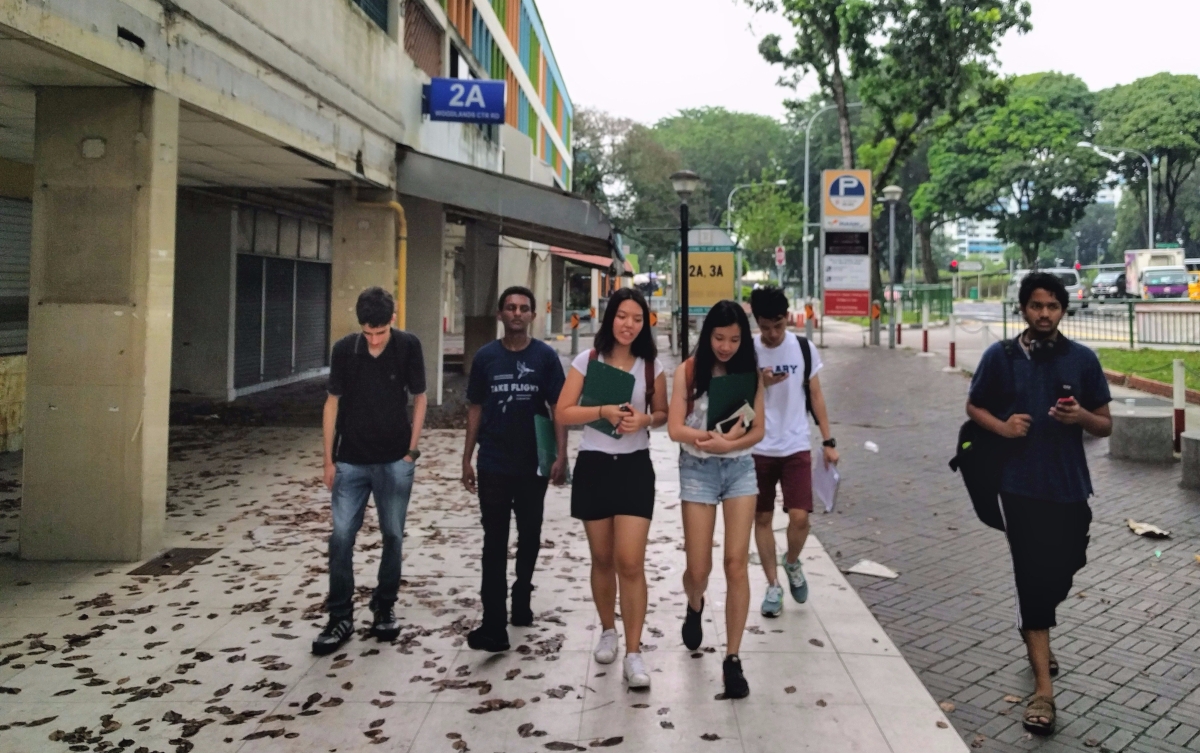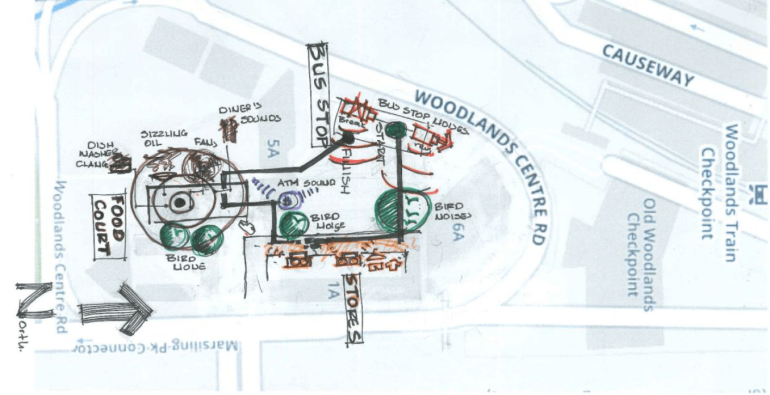


Old Woodlands Town Center is one of the oldest townships in Singapore that used to function as a border-town between Singapore and Malaysia. Currently, it is mostly vacated, and will be partially lost due to change in land use planning. We use this (now-forsaken) heartland to explore the theme of nostalgia. We experimented with designing a trail that would showcase the old Woodland town centre.
Old woodland was, back in its day, a sort of transit space between Malaysia and Singapore. The main focal point of the area was the now closed bus interchange, since many cross the border by bus into both countries. In devising the soundscape heritage tour to commemorate woodland, we tried to put together a narrative that might take place while the town was still fully operational; a narrative that incorporated all the major, distinctive sonic properties as well as the sources that provided them.
The narrative starts and ends at the bus stop, given that’s the main reason most people come to woodland for. It also ends back at the bus stop. It follows a person spending some time in woodland to catch a bus from the interchange. Said person travels on the following route; Buys ticket, walks through the shops during the wait, withdraw some money. End up at the food court, grab a quick bite and go back to catch the bus in time.
Hear the soundscape:
By Esther, Gabriel, Juwon, Kebron
————————————————————

————————————————————
When we visited the Old Woodlands Town Center, our group noticed that this heartland was particularly interesting as we saw the old blend with the new. Soon Old Woodlands will be no longer be a heartland due to the land being possessed to extend the checkpoint area and many people have already relocated, with the shops and stores that define the heartland set to follow suit.
The group decided that in our tour of sounds as such, we would bring out the contrast between the old and the encroachment of new shops and stores. Our path started right down by the road, at the bus interchange, which was primarily responsible for the popularity of the area back in the 1990s. We recorded the noises emitted by the buses as well as several other vehicles as well as the voices and conversations of people to mimic those who would have frequented the interchange all those years ago. From there we began to record miscellaneous sounds such as that of animals that contribute to the more natural aspect of the heartland, such as the sounds of cats and birds, as well as that of water dripping from the leaves of trees onto the ground.
Moving up to the actual structures and shops, we came across a store that was selling clothes and shoes for a number of years as its proprietor explained to us. We were eager to capture the sounds of a bustling store but there were only a paltry two people there so all we could record was the rustling of clothes and the noise that the hangers made when moved. As we moved along the path we recorded more of the sounds that somebody who frequented the heartland would be well adjusted to. The soothing sounds of fans and the drone and hum of people engaging in conversation while they slurped over their Ban Mian are sounds that we also recorded. We managed to capture the sounds of people walking into puddles and leaves, as well as the clanging of metal as people walked over metal walkways and stairs.
The sounds of the shops and more natural elements were broken by the modern music blaring over the speakers of a store selling cellphones that had only recently opened in the area. Here, it was clear to see the contrast between the new and the old, not only visually, but in an auditory sense as well. The contrast was brought out quite clearly again between the food stalls in the hawker centre and the large ‘Sheng Shiong’ that was present at the end of the path. The supermarket was plagued by synthetic man-made noises such as the beeping of the teller machine and the rustling of plastic bags.
The hawker centre meanwhile was more defined by the actual chatter between proprietor and customer and the sounds of metal cutlery as well. The contrast between sounds certainly was clear and points out to an interesting intrusion of modernity into culture.
By Yap Jia Yi


